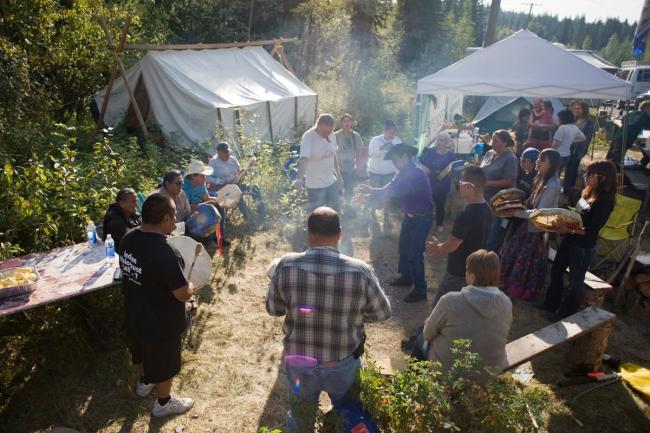Articles Menu

After a man-made lake full of mining waste spilled in the central interior of British Columbia, security guards have been blocking entry to the subsequently contaminated lake and creek. Residents hoping to see first-hand what millions of cubic metres of tailings sludge might have done to Polley Lake or Hazeltine Creek are met with gates, guards, and blocked off roads.
(As of right now, the much larger Quesnel Lake remains accessible, despite it sporting a mysterious waxy film.)
Eight kilometres down the entrance road to the breached Mount Polley mine, a First Nation camp burns tobacco offerings in memory of the land traditionally called Yuct Ne Senxiymetkwe. Over the course of yesterday afternoon, the roadside checkpoint—dotted with tents and flying three First Nation flags—drew visits from Green politician Andrew Weaver, RCMP patrollers, hereditary chiefs from surrounding nations, former and current mine workers, and me.
When I arrived at the camp, Secwepemc elders offered me tobacco to throw on the sacred fire; I added beef jerky out of my backpack to the offering as a sign of respect. Along a table stacked with food and supplies, a banner reads “no surrender.” At first a group of about 30 gathered to sing, drum, and together make sense of the massive environmental disaster.
“It’s really hard, it’s incomprehensible,” says Kanahus Manuel, member of the Secwepemc Women Warrior Society and co-founder of the camp. Manuel and others living in the camp since August 17 have monitored the freighters and buses coming out of the mining site, collecting what information they can from workers willing to stop and chat. “We’re all dealing with something catastrophic. The workers we’ve met have deep concerns.”...more